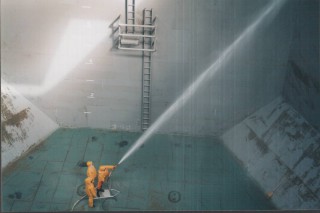Estimating the threat from infectious diseases in seafarers and identifying occupational infectious diseases requires well-designed and internationally-co-ordinated studies, and/or integration in the routine surveillance system of communicable diseases is needed, said Norway-based Wilhelmsen Ships Service in a release.
Numerous studies into seafarers’ illnesses have confirmed both the unusual nature of the job and the scale of the challenge in measuring the risks, in an industry where labour supply has undergone a seismic shift in recent years.
Maritime medicine expert Dr Clara Schlaich and others found in a retrospective study based on incidents recorded in medical log-books from merchant ships under the German flag between 2002-2008, that nearly one-fourth of the visits to the ship’s infirmary were due to communicable diseases, most commonly respiratory and gastrointestinal infections.
The data from these sources show that the majority of consultations and treatments on board – as well as of deaths – are due to medical conditions, rather than injuries, at least in terms of frequency. Among the medical conditions, infectious diseases from the respiratory and digestive system were most prevalent.
“The magnitude of infectious disease occurrence in seafarers as an occupational group is ill-defined due to several challenges,” Dr Schlaich said. “The global population of seafarers cannot, by the nature of the profession and organization of the international and national shipping fleet, be described and studied as such.”
With a few exceptions, no national or international surveillance systems exist on infectious disease occurrences on ships and any such systems do not collect data on professions in general or seafaring in particular.
In the absence of reliable data and without proper training, seafarers remain at risk from a wide range of infectious diseases. These may either result from person-to-person transmission of infectious agents or through food, water or insects onboard ships or in ports, as well as from pre-existing conditions.
Copyright Ships & Ports Ltd. Permission to use quotations from this article is granted subject to appropriate credit given to www.shipsandports.com.ng as the source.

